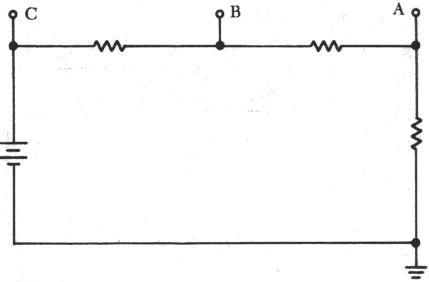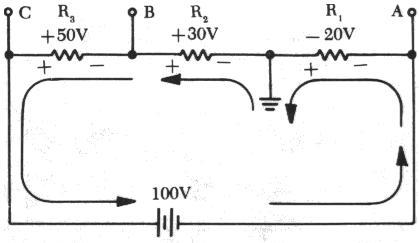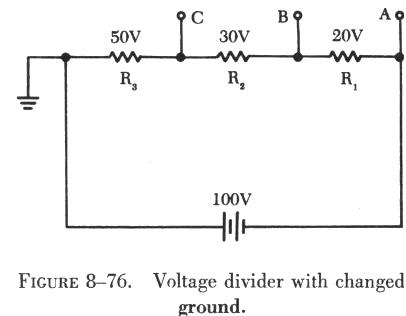A voltage divider usually consists of a resistor, or resistors connected in series, with fixed or movable contacts and two fixed terminal contacts. As current flows through the resistor, different voltages can be obtained between the contacts. A typical voltage divider is shown in figure 8-72.
A load is any device which draws current. A heavy load means a heavy current drain. In addition to the current drawn by the various loads, there is a certain amount drawn by the voltage divider itself. This is known as bleeder current.




